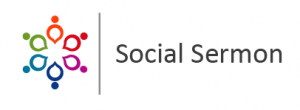 Social media, like other major communication revolutions before it (think: printing press) have radically changed the way we learn, connect and organize. The impact on culture and behavior is significant – we have new ways to connect with our communities, find meaning, express ourselves and engage. The new ease of organizing is fundamentally changing the role that organizations play for their constituents. This is great news for the Jewish community, if we are able to take advantage of it.
Social media, like other major communication revolutions before it (think: printing press) have radically changed the way we learn, connect and organize. The impact on culture and behavior is significant – we have new ways to connect with our communities, find meaning, express ourselves and engage. The new ease of organizing is fundamentally changing the role that organizations play for their constituents. This is great news for the Jewish community, if we are able to take advantage of it.
We invite you to try a new approach to Torah study, community building, and perhaps even sermon writing in your congregation, The Social Sermon, an idea comes from acknowledging three things:
1) That many people can’t get to the synagogue for a lunch or evening Torah study class, but that doesn’t mean that they aren’t interested;
2) That people want the social experience of learning, not just passive reading or listening to a lecture, and that connection through learning enriches a local community; and
3) Social technologies can be a wonderful tool to enrich and augment Torah learning in local communities.
Imagine a Saturday morning sermon that’s the work of not only your rabbi, but you as well. Lets take it a step further: what if it weren’t just you and your rabbi, but also your fellow congregants, young and old, those new to the community and the stalwarts of your city? By the time your rabbi delivers his Shabbat remarks, he or she could be drawing inspiration from, or even representing the discussion of, hundreds of his congregants!
What does The Social Sermon look like? At the beginning of the week a Rabbi posts a question on his or her blog, or on Twitter with a particular hashtag (e.g. #CBSSS for Congregation Beth Shalom Social Sermon), or as a Facebook post on the congregation’s Page. The first post would describe a theme of the parasha, or link to some text, and at the end, pose a question.
As comments and responses start to be posted, the Rabbi then facilitates an ongoing conversation through the week — responding regularly with insight, text, links, answers to questions, and more questions to guide the discussion.
By the end of the week, several things will have happened:
- New people are engaged in Torah study. Likely a portion of the online participants are a demographic that doesn’t often come to mid-day or evenig adult education classes. (On-site classes – adult and youth – can also participate);
- Participants will have formed new relationships through the online discussion, perhaps following each other on Twitter, friending each other on Facebook, etc. which leads to ambient awareness, thus strengthening your community;
- The Rabbi will have a better understand of what aspects of the parasha resonate with the community, and be able to design a Shabbat sermon that is the most relevant for the congregation, and will have ideas, quotes, context to make the sermon even more rich; and
- More people may show up for Shabbat services, feeling more educated, connected and like they have some ownership over the sermon that week.
And for those that missed the service, they could read it the next day when the rabbi posts the sermon back on the blog or web site, with a link on Twitter and/or Facebook.
Interested? Use the SocialSermon tag on this blog to find posts about the Social Sermon, and for case studies and guest posts from Rabbis and educators who are doing it. Follow #socialsermon on Twitter for updates, links to these blog posts, and to connect with others who are doing it. Join us on Facebook to be connected others who are doing Social Sermons and get important news.
Feel free to adapt the concept — a confirmation class could do this throughout the week between class meetings, a youth group could do it with their adviser or a parent facilitator. Please report back and let us know how it’s going, and what you’re doing. Please let us know if we can help you at any stage – leave a comment here, or any other space mentioned above.
Want more “hand holding”? Darim offers hourly consulting, and we are working with interested Social Sermoners to find funding from a donor or Federation small grants program to work with a group of Rabbis in your local community. Holler if you’d like more information.
Ready, Set…. Social Sermon!


